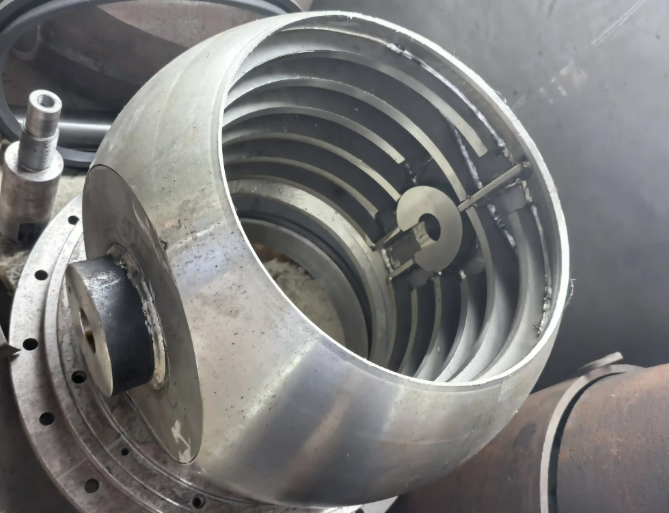Looking for a game-changer in heat resistance? Imagine a metalized fiber that can withstand high temperatures without breaking a sweat. This revolutionary high temperature resistant metalized fiber is here to redefine durability and performance in extreme conditions. Curious about how this innovation can elevate your projects to the next level of reliability and efficiency? Stay tuned as we delve into the unparalleled benefits and applications of this cutting-edge material. Get ready to unlock a world of possibilities with this game-changing high temperature resistant metalized fiber.
Key Takeaways
-
Actionable Insight: When selecting high temperature resistant metalized fibers, consider properties like thermal stability, electrical conductivity, and mechanical strength to meet specific application requirements.
-
Relevance: Understanding the production techniques and types of high temperature fibers can help industries such as aerospace, automotive, and electronics in choosing the most suitable materials for their products.
-
Connection to Audience: Whether you are a materials engineer, product designer, or researcher, knowing the key properties of metalized fibers and their role in fiber-reinforced composites can enhance your decision-making process.
-
Link to Content: The discussion on metal yarns and electrical cables highlights the versatility of high temperature resistant fibers in various applications, emphasizing their importance in modern industries.
-
Practical Application: Implementing a mix of polymer and nonwoven variants of high temperature fibers can offer a balance between cost-effectiveness and performance, catering to different project needs.
-
Industry Impact: From sintered to short fibers, each type plays a unique role in enhancing the thermal and mechanical properties of materials, contributing to advancements in technology and product innovation.
Understanding High Temperature Fibers
Factors Affecting Temperature Resistance
Metalized fibers' temperature resistance is influenced by various factors. The type of metal coating, fiber material, and thickness play crucial roles. The method of application affects how well the fiber withstands high temperatures.
The composition of the atmosphere also impacts the temperature range of metalized fibers. In oxidizing environments, such as those with high oxygen content, fibers may experience reduced temperature resistance. Conversely, in inert atmospheres, like argon or nitrogen, the fibers can maintain their integrity at higher temperatures.
Limitations of Copper Alloy Coating
Copper alloy coatings are commonly used for enhancing the properties of metalized fibers. However, these coatings have limitations under different exposure conditions. In high-temperature applications, copper alloys may exhibit oxidation and degradation, affecting the fiber's overall performance.
In environments with high humidity levels, copper alloy coatings are susceptible to corrosion. This can lead to a decrease in the fiber's temperature resistance over time. Moreover, when exposed to harsh chemicals, such as acids or alkalis, the copper alloy coating may deteriorate rapidly.
Key Properties of Metalized Fibers
Available Metals
Metalized fibers are commonly coated with aluminum, copper, or silver to enhance their properties. These metals provide high thermal conductivity and resistance to corrosion.
Coating Thickness Variation
The coating thickness of metalized fibers is directly proportional to the fiber diameter. Thicker coatings are applied to larger diameter fibers to ensure uniform coverage.
Metalizing processes such as sputtering or electroplating control the coating thickness, ensuring consistent performance across different fiber sizes.
Temperature Resistance Comparison
Aluminum-coated fibers exhibit remarkable temperature resistance, withstanding temperatures up to 500°C. In contrast, copper alloy coatings offer lower temperature resistance, typically up to 300°C.
The superior thermal stability of aluminum-coated fibers makes them ideal for applications requiring high-temperature performance, such as aerospace components and industrial machinery.
Overview of Production Techniques
Stripping Copper-Coated Fibers
Stripping copper-coated fibers involves a meticulous process using a nitric acid solution. Initially, the fiber undergoes immersion in the solution to dissolve the copper layer effectively.
This method is crucial for removing the copper coating and ensuring the fiber's purity. The nitric acid solution plays a vital role in this intricate stripping process.
Removing Aluminum Coating
For eliminating the aluminum coating, manufacturers employ PAN aluminum etch. This technique facilitates the precise removal of aluminum layers from metalized fibers.
The PAN aluminum etch method is highly effective in stripping away aluminum coatings, maintaining the integrity of the underlying fibers.
Soldering Techniques for Copper-Alloy Coated Fibers
When it comes to soldering copper-alloy coated fibers, specialized techniques are essential. These methods ensure secure connections while preserving the integrity of the fiber.
dering plays a critical role in joining metalized fibers without compromising their high-temperature resistance properties.
Types of High Temperature Fibers
Teflon vs. Stainless Steel Braided Jackets
High temperature resistant metalized fiber cables come in various types, including those with Teflon and stainless steel braided jackets. Teflon jackets are known for their exceptional chemical resistance, while stainless steel braided jackets offer superior mechanical protection.
Stainless steel braided jackets provide robust shielding against external factors, making them ideal for harsh environments. On the other hand, Teflon jackets excel in resisting chemicals, ensuring longevity and reliability in corrosive settings.
Copper Alloy and Aluminum-Coated Fibers
When it comes to temperature limits, copper alloy fibers can withstand temperatures up to 600°C, making them suitable for high-heat applications. In comparison, aluminum-coated fibers have a lower temperature limit of around 300-400°C due to the material's properties.
Copper alloy fibers are preferred for extreme heat conditions where stability is crucial, whereas aluminum-coated fibers are more suited for moderate temperature environments due to their lower heat resistance capabilities.
Availability for Shorter Lengths
High-temperature fibers are available in the market for varying lengths, including shorter lengths. These shorter lengths cater to specific applications that require precise measurements or limited spatial constraints.
The availability of high-temperature fibers in shorter lengths offers flexibility in design and installation processes, allowing for customized solutions tailored to unique project requirements.
Mr. Xu
sales-xu@zm-fibre.com

More Stories
Practical Selection Strategies for Dome Valve Balls in High-Temperature Bulk Handling Systems
Conveyor Chain Selection Guide: Material, Specifications, and Load Capacity Analysis
Enhancing Security and Convenience with the Right Roller Door Opener